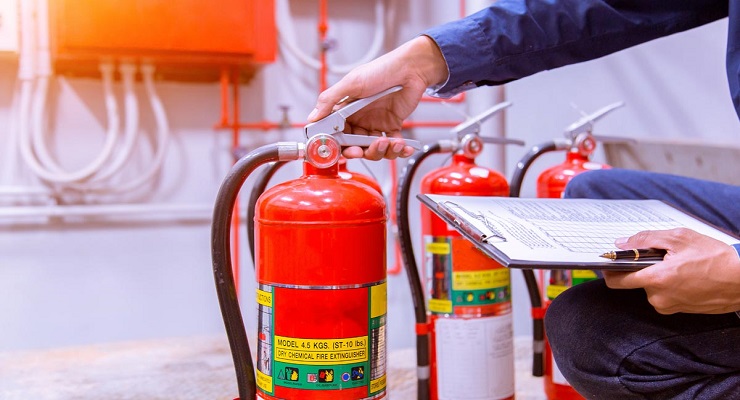Because when a fire breaks out, the last thing you want is a faulty extinguisher.
When was the last time you really looked at the fire extinguishers in your building—not just saw them, but checked whether they’re actually up to standard? While a fire extinguisher on the wall might give the impression of safety, if it’s non-compliant or poorly maintained, it may offer little more than false confidence.
SafeQuip, a leading supplier of certified fire safety equipment in South Africa, puts compliance and performance at the forefront to ensure your fire protection equipment works when it matters most.
Why Fire Extinguisher Compliance Is Critical
South Africa’s fire safety regulations exist for a reason: to save lives and protect property. The SANS 10400-T standard requires that all installed fire extinguishers comply with SANS 1910. Additionally, the Pressure Equipment Regulations prohibit the use of extinguishers that aren’t properly manufactured or filled in accordance with national safety standards.
The Growing Threat of Counterfeit and Non-Compliant Fire Extinguishers
Unfortunately, not every extinguisher on the market is legitimate. Some suppliers cut corners—using substandard powder, skipping critical safety components, or applying fake certification labels. These products may look the part, but in an emergency, they can be dangerously ineffective.
How to Tell If a Fire Extinguisher Is Compliant
Here are the key features to look for:
✅ Certification Marks: Only accept extinguishers certified by SABS, BSI (Kite Mark), or SACAS under SANS 1910. No mark = no trust.
✅ Powder Quality: The dry chemical powder must meet SANS 1522 standards.
✅ Cylinder Markings: The body should show the standard, manufacturer name, date of manufacture, test pressure, and serial number—permanently stamped.
✅ Detailed Label: Check for the fire rating, working pressure, weight, hydrostatic test pressure, and full manufacturer info. Missing details are a red flag.
✅ Valve Features: Valves should include a safety pressure relief device and CE marking. Always request the module certificate.
Servicing and Maintenance: Who You Trust Matters
Compliance doesn’t stop at purchase—it’s equally about who services your extinguishers. Maintenance must be carried out by SANS 1475-certified companies using SAQCC-registered technicians. Be cautious of service providers who replace original manufacturer labels; this invalidates the extinguisher’s certification if they’re not listed on the manufacturer’s approved schedule.
Why SafeQuip Stands Out
A fire extinguisher is not just a red can on the wall—it’s a frontline defense. SafeQuip offers a full range of SABS-approved extinguishers for homes, businesses, industrial sites, and even marine use. Their stored pressure dry chemical powder (DCP) units are suited for Class A, B, and C fires, with different powder grades available to match specific risk levels.
Their latest Lith-Ex range, compliant with SANS 1910:2022 and tested under NTA 8133:2021 (KIWA/POOO55865), is designed specifically to combat lithium-ion battery fires—a growing concern in modern workplaces and homes.
In addition, SafeQuip supplies:
-
CO₂ extinguishers for electrical and flammable liquid fires
-
Wet chemical and foam extinguishers for commercial kitchens and fuel hazards
-
Full accessories and spares to support installations and long-term servicing
All equipment is built for straightforward maintenance and full compliance with SANS 1475, ensuring total peace of mind.
Bottom Line: If your fire extinguisher isn’t compliant, it may not work when you need it most. Don’t leave safety to chance. Trust certified products and qualified professionals—because real protection is in the details.


